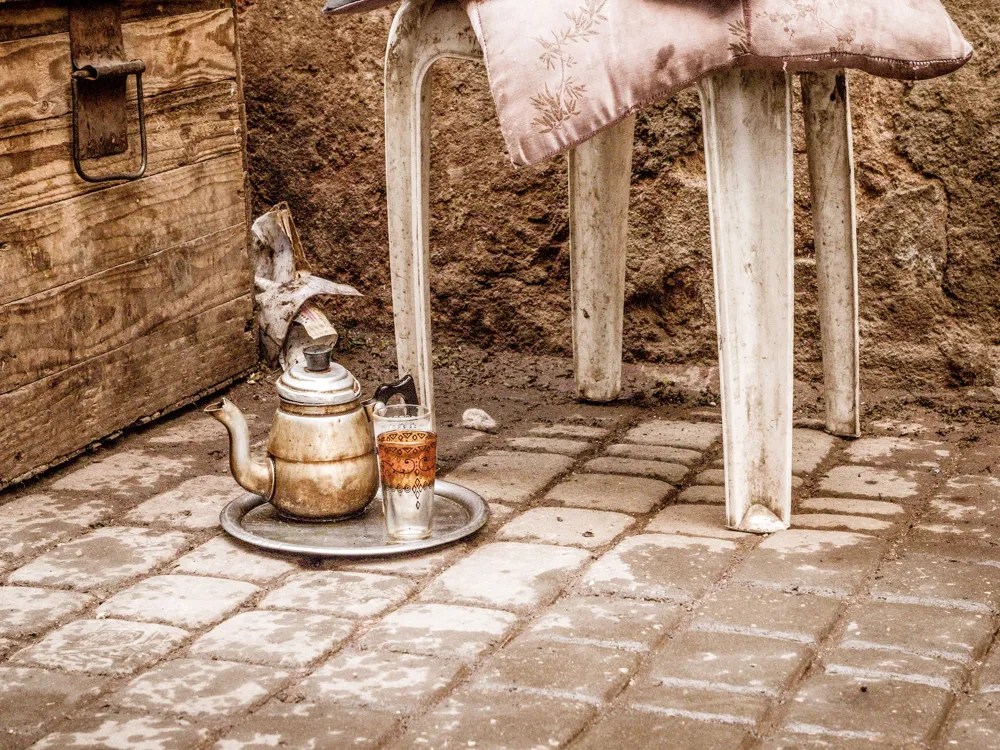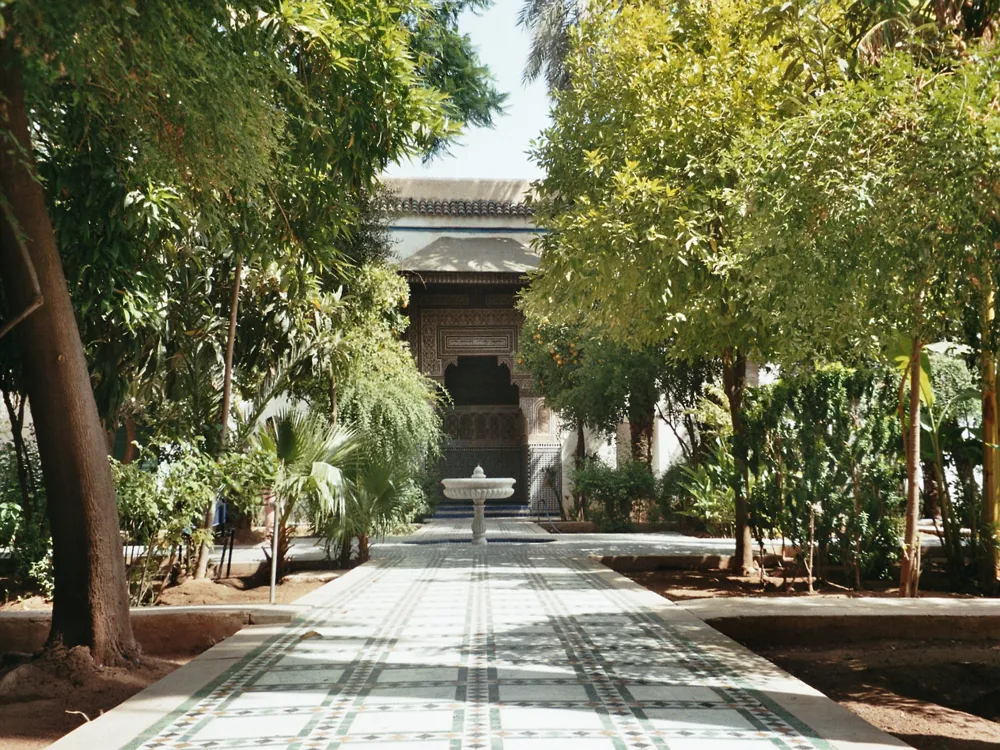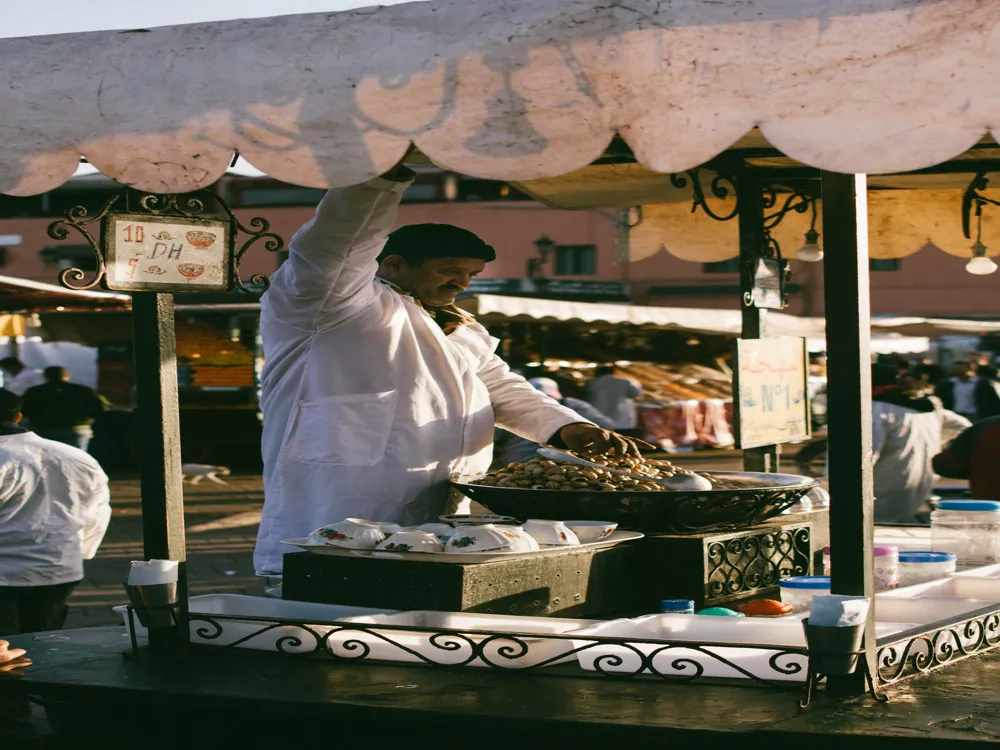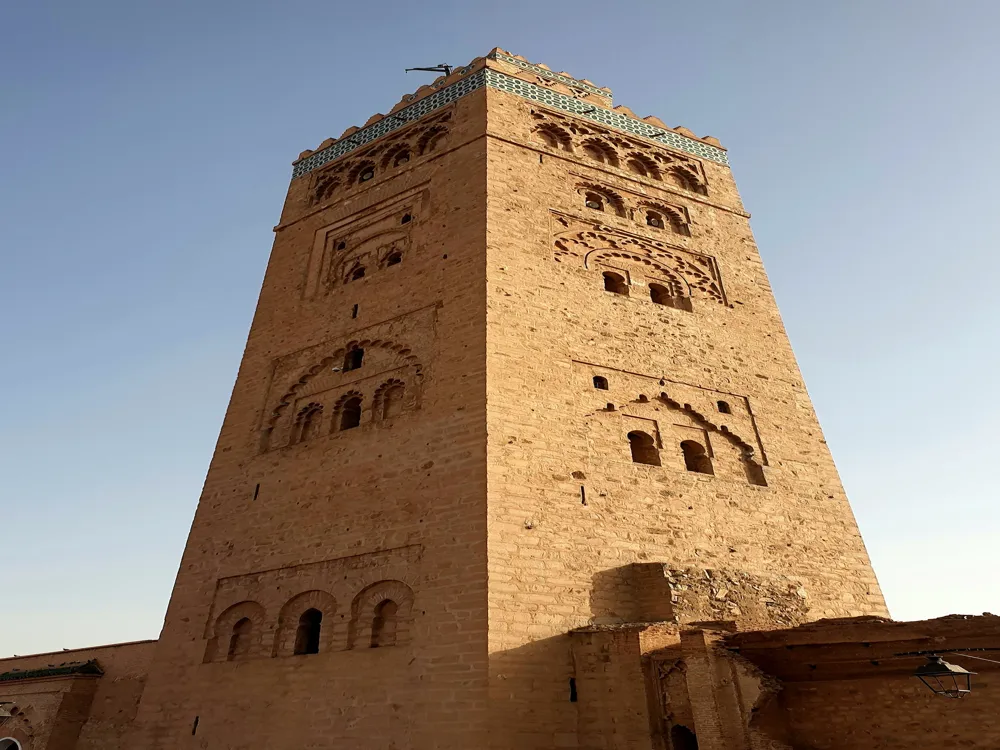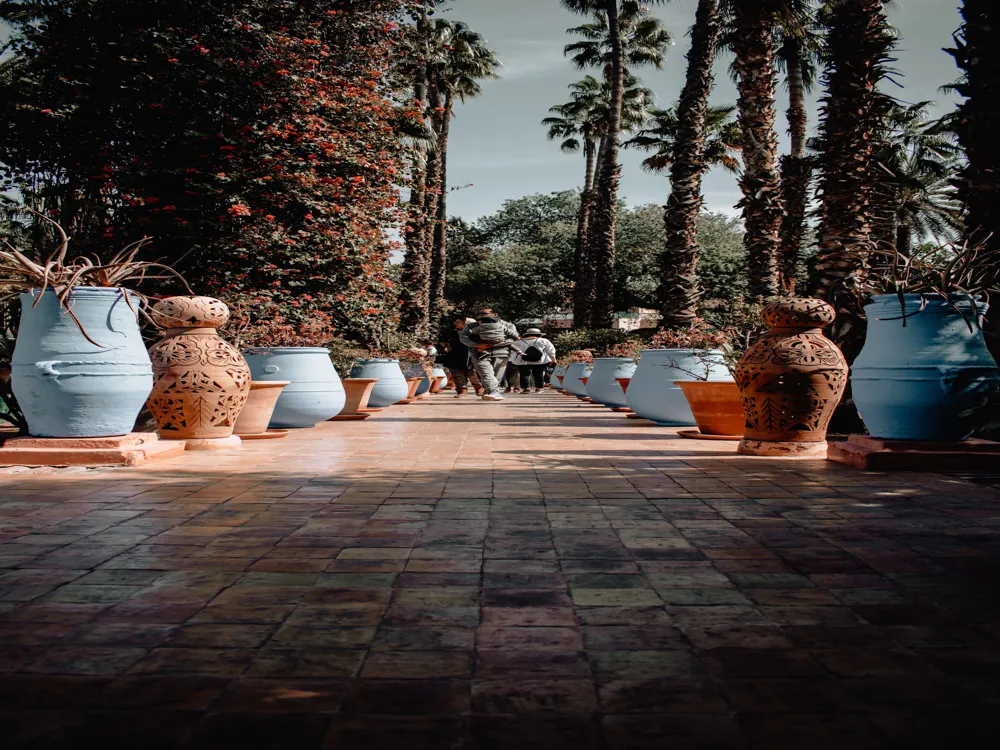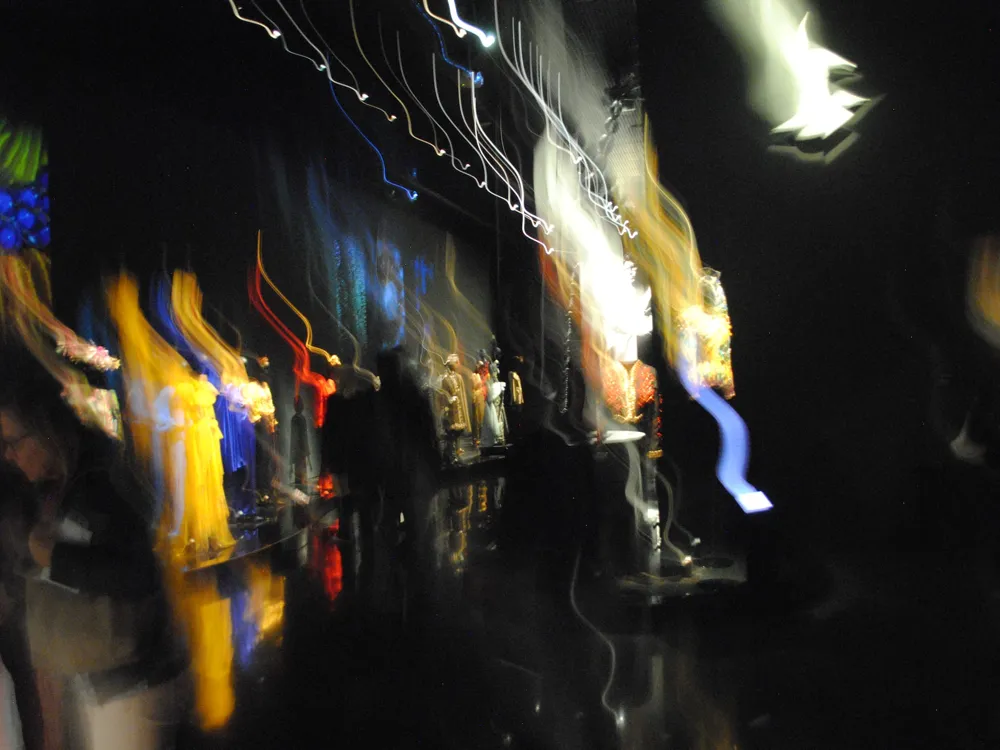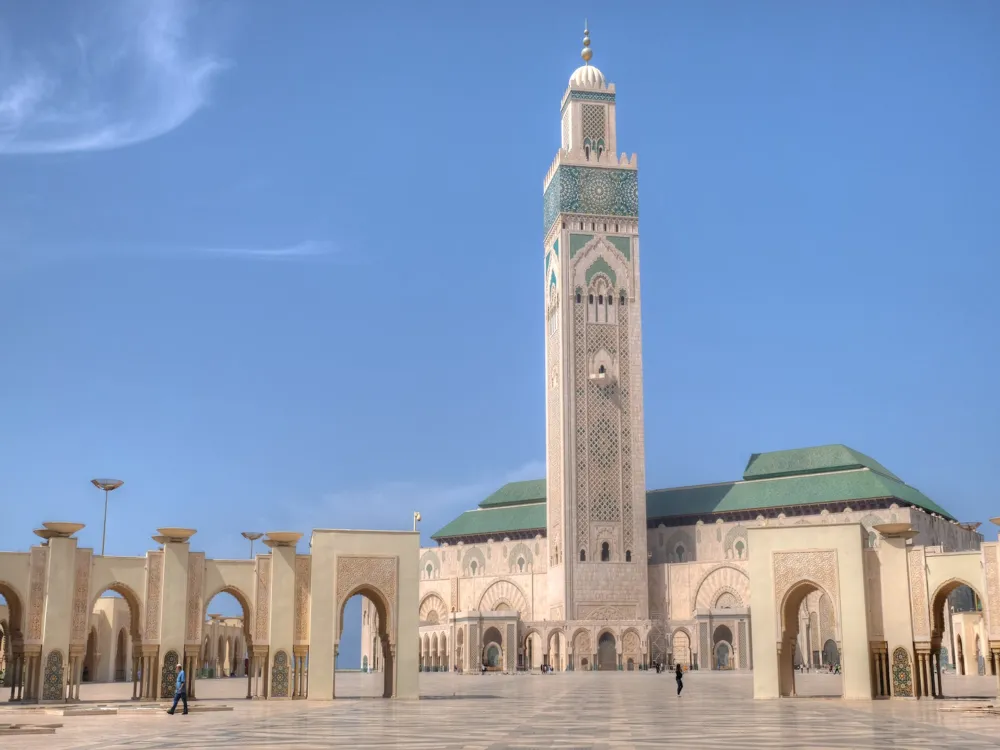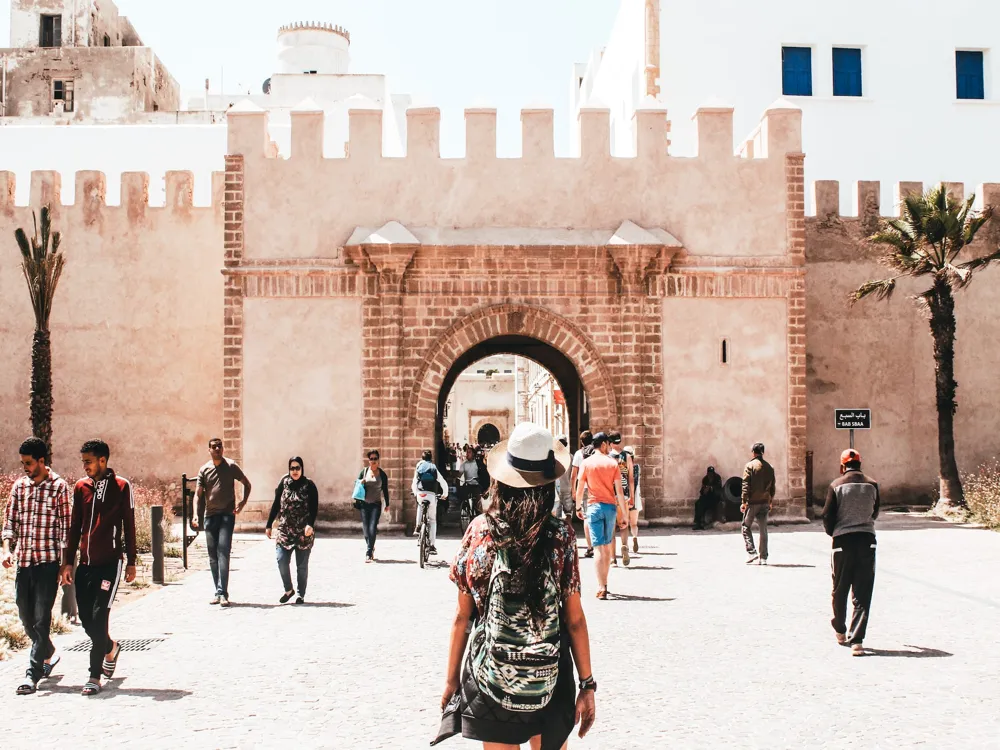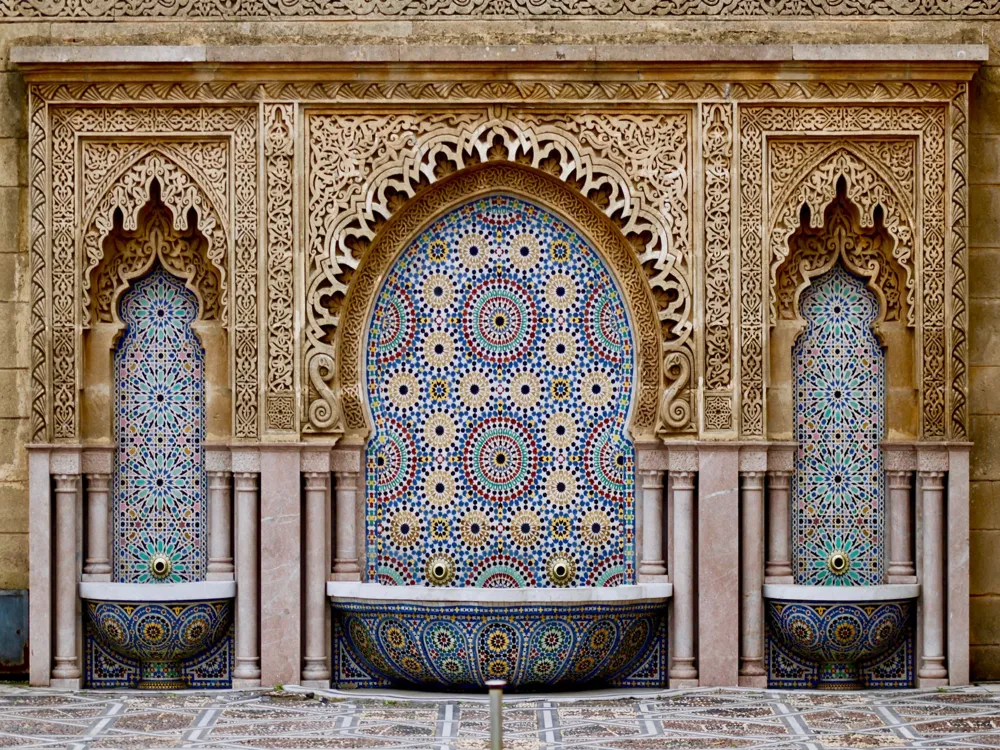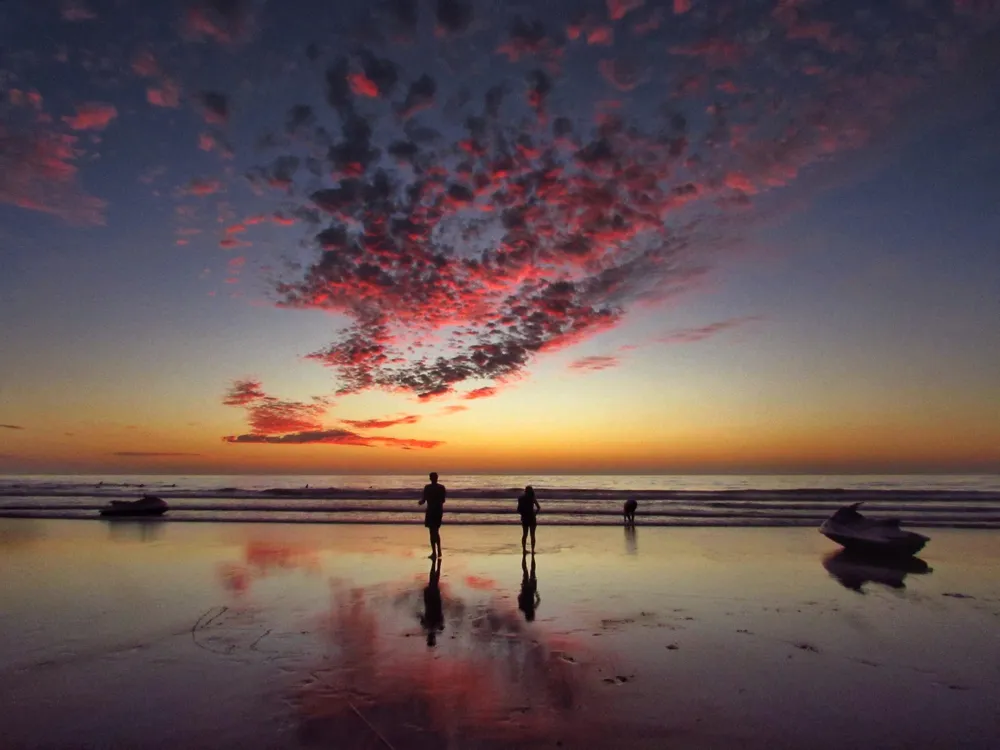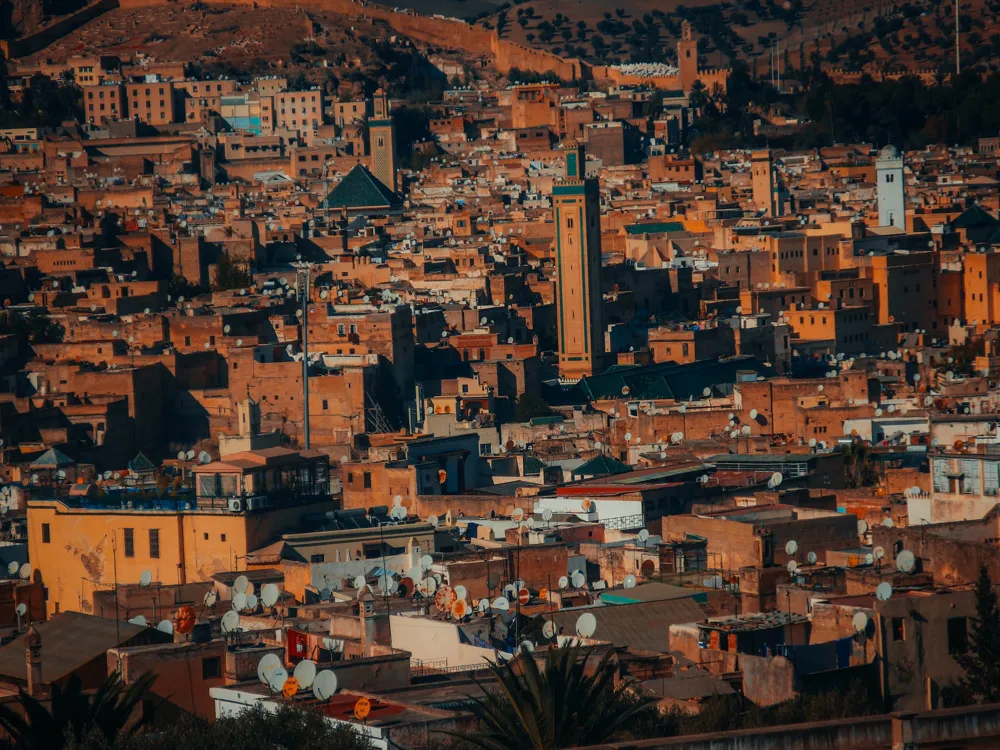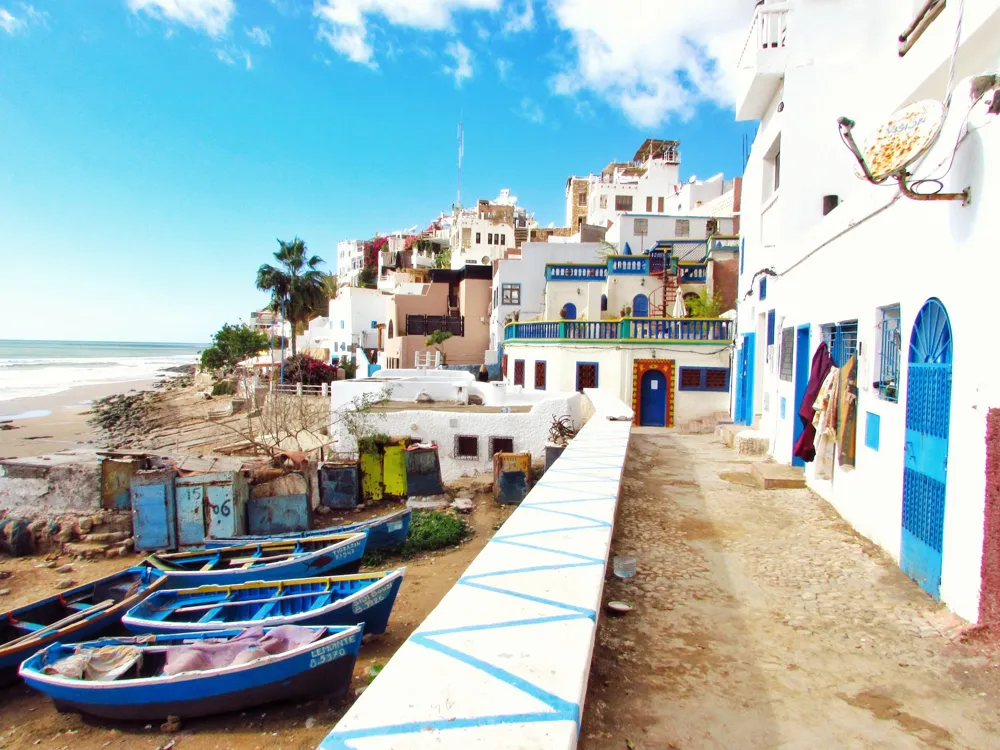The Medersa Ben Youssef, located in the heart of Marrakech, Morocco, is a historical gem that stands as a testament to the rich cultural and architectural heritage of the region. Founded in the 14th century and rebuilt in the 16th century, this former Islamic college has been a center of learning and spirituality. It is named after the Almoravid sultan Ali ibn Yusuf, who expanded the city and its influence considerably. Today, the Medersa Ben Youssef is not only a significant historical site but also a popular tourist attraction, offering a glimpse into the intricate artistry and architectural prowess of the Moroccan heritage. As visitors step into the Medersa, they are immediately transported back in time. The courtyard, with its reflective pool and intricate tile work, sets the stage for an architectural journey. The walls are adorned with beautiful zellij (Moroccan tiles) and carved cedar wood, showcasing the intricate craftsmanship of the artisans. The Medersa was once home to over 800 students, offering insights into Islamic theology, law, and more. The dormitory rooms, arranged around small internal courtyards, are a testament to the communal lifestyle of the students who once resided there. The importance of Medersa Ben Youssef extends beyond its physical beauty. It symbolizes a period when Marrakech was a thriving hub of education and culture in the Muslim world. The Medersa's library was a beacon of knowledge, housing a vast collection of books and manuscripts. Scholars and students from across the Islamic world would come to study and exchange ideas, contributing to the rich tapestry of Islamic thought and culture. The Medersa also played a crucial role in preserving and promoting Moroccan architectural styles and motifs, which have influenced designs far beyond the country's borders. The architectural design of Medersa Ben Youssef is a stunning representation of Moroccan-Andalusian architecture. The Medersa's layout is centered around a large courtyard, which was a common feature in Islamic architecture, symbolizing the universe and the divine presence. This courtyard is surrounded by ornate chambers and a mosque, each featuring unique elements that contribute to the overall aesthetic and spiritual ambiance of the space. One of the most striking features of the Medersa is its use of zellij tiles. These geometrically patterned tiles are not just decorative elements; they are also rich in symbolic meaning, representing the infinite nature of God. The precision and complexity of the tilework demonstrate the high level of skill and artistry of the craftsmen. The play of light and shadow on these tiles creates a dynamic and ever-changing environment, reflecting the transient nature of the world. The use of carved cedar wood in the Medersa is another highlight. The intricate carvings, often featuring Arabic calligraphy and floral motifs, are a testament to the meticulous craftsmanship of the artisans. These carvings are not only aesthetically pleasing but also serve as religious and philosophical symbols, with calligraphy often featuring verses from the Quran or poetic verses. The Medersa's architecture also includes several key functional elements. The student dormitories, for example, are modest in decoration compared to the public areas, reflecting the focus on learning and contemplation. The layout of these rooms around small courtyards ensured proper ventilation and lighting, crucial in the hot Moroccan climate. The Medersa also featured advanced water systems for ablutions and other daily needs, showcasing the ingenuity of medieval Moroccan architecture. The best time to visit Medersa Ben Youssef is during the spring (April to June) or fall (September to November) when the weather in Marrakech is most pleasant. Early mornings or late afternoons are ideal to avoid the crowds and experience the Medersa in a more serene setting. Visitors should dress modestly out of respect for the Medersa's religious and cultural significance. This includes covering shoulders and knees. It is also advised to speak softly and behave respectfully within the premises. Photography is allowed in Medersa Ben Youssef, and it's a paradise for photographers. However, the use of tripods may be restricted, and it's important to be mindful of not obstructing paths for other visitors while taking photos. Consider taking a guided tour to fully appreciate the history and architecture of Medersa Ben Youssef. Guides can provide insights and stories that are not readily apparent to the casual visitor. Medersa Ben Youssef is located in the Medina of Marrakech, which is easily accessible by various means of transport. If staying in Marrakech, walking is a great option to explore the Medina's narrow streets. For those staying outside the Medina, taxis are readily available. It's advisable to agree on the fare before starting the journey. For a more traditional experience, visitors can opt for a Caleche ride (horse-drawn carriage), which can be a charming way to reach the Medersa. Read More:Overview of Medersa Ben Youssef in Marrakech
Architecture of Medersa Ben Youssef
Tips When Visiting Medersa Ben Youssef
Best Time to Visit
Respecting Local Customs
Photography Tips
Guided Tours
How To Reach Medersa Ben Youssef
Medersa Ben Youssef
Marrakech
₹ 89,000 onwards
View marrakech Packages
Weather :
Tags : Mosque
Timings : 8AM-5PM
Entry Fee : Dh 22
Planning a Trip? Ask Your Question
Marrakech Travel Packages
View All Packages For Marrakech
Top Hotel Collections for Marrakech

Private Pool

Luxury Hotels

5-Star Hotels

Pet Friendly
Top Hotels Near Marrakech
Other Top Ranking Places In Marrakech
View All Places To Visit In marrakech
View marrakech Packages
Weather :
Tags : Mosque
Timings : 8AM-5PM
Entry Fee : Dh 22
Planning a Trip? Ask Your Question
Marrakech Travel Packages
View All Packages For Marrakech
Top Hotel Collections for Marrakech

Private Pool

Luxury Hotels

5-Star Hotels

Pet Friendly







